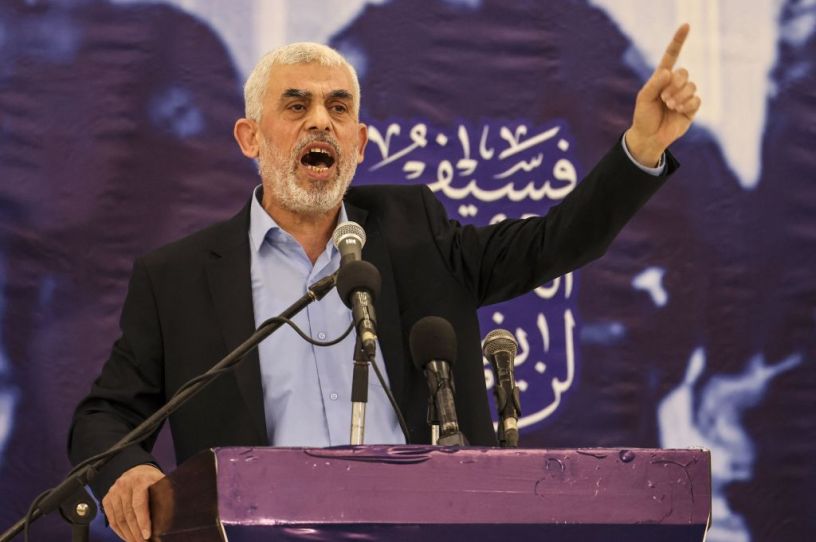Israeli Intelligence Failed, But So Did Hamas

It’s now clear that a rare Israeli intelligence failure enabled the Palestinian terrorist group Hamas to overrun the border and carry out the coordinated and bloody assault that claimed more than 1,300 Israeli lives and rocked the country to its core.
For more than a year, the Israeli intelligence services—the Mossad (foreign intelligence), the Shin Bet (domestic intelligence), and Aman (military intelligence)—were operating on the faulty assumption that Hamas no longer wished to invite painful wars upon the beleaguered population of Gaza. They believed Hamas was content to export violence to the West Bank, where political rivals in the Palestinian Authority cling to power and where the Israel Defense Forces (IDF) had been struggling to contain unrest that has been steadily building since March 2022.
The logic was hard to argue with. And the conventional wisdom was buttressed by intelligence assessments that Gaza-based Hamas leader Yahya Sinwar was looking for a modus vivendi with Israel that would enable him to provide more services to the exhausted and impoverished people of Gaza.
It was all wrong. Not unlike the “concept” that in 1973 had convinced Israeli leaders and intelligence professionals that the surrounding Arab states were deterred from attacking Israel, the government of Benjamin Netanyahu and the Israeli security apparatus fell prey on October 7 to a similar brand of groupthink with horrific consequences. And not unlike the soul-searching that followed the 1973 war, the government of Israel will without a doubt establish a commission of inquiry to explore the errors in the lead-up to the Hamas assault. This is serious business in a tiny and embattled country where the margin for error—if it exists at all—is razor thin.
But it was not only Israel that failed an important test here. The Hamas terrorist organization had a rare and precious opportunity to work toward the modus vivendi that the Israelis believed was in the offing. Indeed, the Israelis were open to working with Hamas (through Arab interlocutors like Egypt and others) to afford better lives to the 2.2 million people in Gaza—even as the group continued to threaten Israel. The Israelis were willing to do this even as Hamas stoked violence in the West Bank and rather openly stockpiled rockets and other weapons for the clashes that recently unfolded.
Admittedly, Gaza was never going to prosper so long as Hamas remained in control. It is no secret that terrorist groups are notoriously poor at governing, and Hamas’ rule only reinforced that notion. The group has long directed civilian assets toward military capabilities, which only compounded the misery of a population that repeatedly must brace for wars its rulers needlessly provoke against a much stronger power.
The Hamas murder spree of October 7 ensures more misery for the people of Gaza. The Israeli air assault is already underway, and a ground invasion is imminent. The unfolding war promises to be drastically different from the previous rounds of conflict in 2008, 2012, 2014, and 2021. This time, the Israelis seek nothing short of Hamas’ evisceration. “After they killed 1,200 Israelis in one day, they lost the right to exist,” one former Israeli official told me this week.
The Israeli war plan will likely include the destruction of all physical assets used by the terror group in its efforts to wage war. Many are embedded within civilian infrastructure or nestled next to it. Others are located in tunnels beneath Gaza’s streets. All of it will likely lay in rubble by the time the guns fall silent. It could take years for Gaza to recover.
But Israel’s leaders may have no alternative to war. The Israeli public is rather predictable. It wants to settle the score. So does the Israeli military. In other words, Hamas failed by knowingly sacrificing the well being of the entire Gaza population when it launched its attack.
Of course, it is no surprise that Hamas has failed to govern Gaza responsibly. Terrorist groups are not good at governing. In this case, however, the group has steered 2.2 million people into a war that could render the entire Gaza Strip uninhabitable for some time to come.
Gaza, however, may not be the only field of fight in the war that beckons. The regime in Iran may choose to activate its armed proxies in the West Bank, Lebanon, or even Syria, thereby thrusting Israel into a multifront war. Hamas’ October 7 assault could have been an opening salvo in a more complex plan.
But even this will not change Israel’s calculus. The country’s political and military leadership will pursue Hamas’ destruction, even if it must also dismantle Hezbollah at the same time. Apart from the desire to settle the score with the Hamas militants that surprised and overwhelmed the Israeli military, there exists a dogged determination to recover the more than 100 hostages whom Hamas dragged back into Gaza. The value Israel places on every single life is by now well-known to Hamas. Israel will stop at nothing to find the hostages—dead or alive.
Click here for more coverage of the war in Israel.